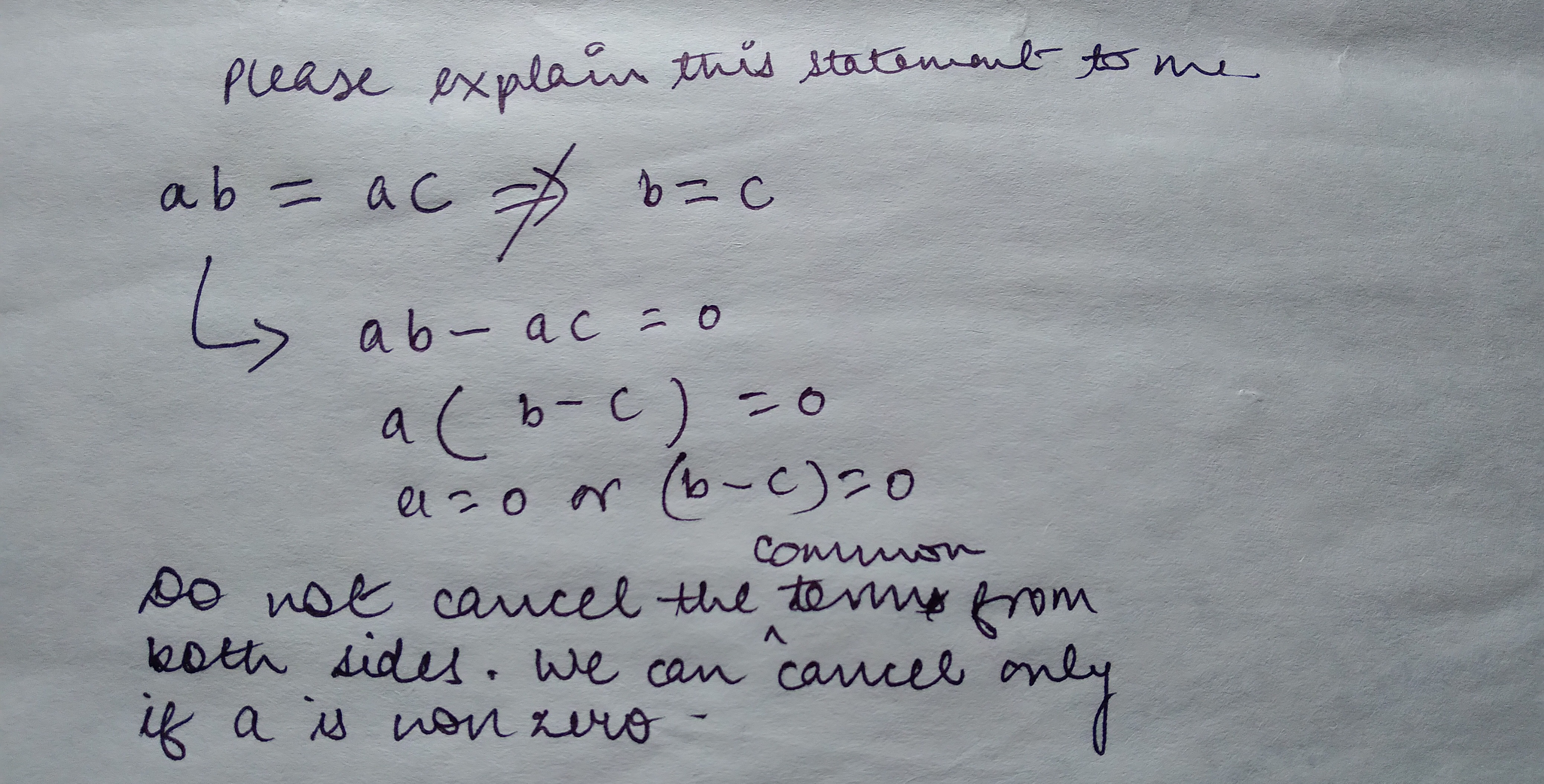Question
Question: The statement "$ab = ac \Rightarrow b=c$" asserts that if the product of $a$ with $b$ is equal to th...
The statement "ab=ac⇒b=c" asserts that if the product of a with b is equal to the product of a with c, then b must be equal to c. This implication is false in general.
The provided derivation shows the reasoning: Starting with the equation: ab=ac
Subtract ac from both sides: ab−ac=0
Factor out the common term a: a(b−c)=0
For the product of two quantities to be zero, at least one of the quantities must be zero. This leads to two possibilities:
- a=0
- b−c=0 (which implies b=c)
The implication "ab=ac⇒b=c" is only true if the second case (b−c=0) is the only possible outcome. However, the first case (a=0) shows that this is not always true.
Counterexample: If a=0, the equation a(b−c)=0 becomes 0⋅(b−c)=0, which simplifies to 0=0. This equation is true for any values of b and c. Therefore, if a=0, b does not necessarily have to be equal to c.
For instance, let a=0, b=5, and c=10. Then, ab=0×5=0. And ac=0×10=0. So, ab=ac is true (0=0). However, b=c (5=10). This counterexample demonstrates that the statement "ab=ac⇒b=c" is false.
The note "Do not cancel the common terms from both sides. We can cancel only if a is non zero" highlights the pitfall. Cancelling a from ab=ac (which is equivalent to dividing by a) is only a valid operation if a=0. If a can be zero, then cancelling it would lead to an incorrect conclusion that b=c always follows, ignoring the case where a=0 and b=c.
The implication "ab=ac⇒b=c" holds true only under the condition that a=0.
Explanation of the solution (minimal)
The statement ab=ac⇒b=c is false. Rearranging ab=ac gives a(b−c)=0. This implies a=0 or b−c=0. If a=0, b need not equal c (e.g., a=0,b=5,c=10). The conclusion b=c is only guaranteed if a=0.

The statement is False.
Solution
The statement ab=ac⇒b=c is false. Rearranging ab=ac gives a(b−c)=0. This implies a=0 or b−c=0. If a=0, b need not equal c (e.g., a=0,b=5,c=10). The conclusion b=c is only guaranteed if a=0.
